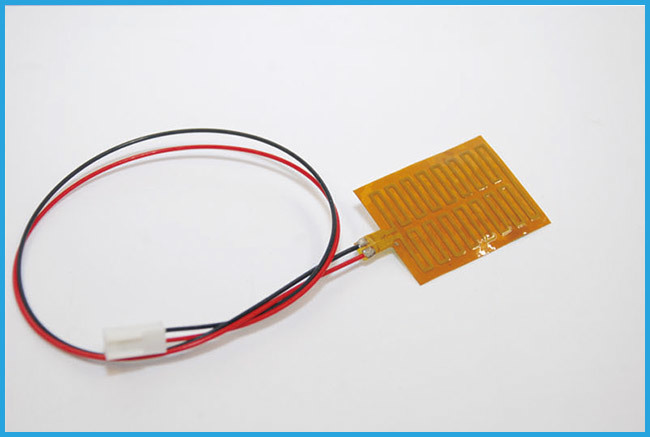Characteristics and Applications of Thermally Conductive Silicone Sheets
Release time:
2021-09-09
Thermal Silicone SheetIn the field of intelligent manufacturing, electronic devices such as transistors, automotive electronic components, power modules, and print heads, as well as instruments, are used. Special attention needs to be paid to heat conduction and dissipation during use. This problem can be solved with thermal silicone sheets. So, let's learn about the characteristics and applications of thermal silicone sheets!

01. Definition of Thermal Silicone Sheet
Thermal Silicone SheetIt is a heat-conductive medium material synthesized by using organic silicone as a base material, adding various auxiliary materials such as metal oxides, and using a special process. In the industry, it is also called a thermal silicone pad, thermal silicone film, thermal gasket, thermal silicone pad, etc. Its main function is heat transfer from gaps. By filling the gaps, it connects the heat generating part and the heat dissipation part, effectively improving heat transfer efficiency. It also meets the design requirements of miniaturization and ultra-thinness of equipment and is a heat-conducting filling material with high technicality and practicality.
02. Advantages of Thermal Silicone Sheet
1. The material is soft, has good compression performance, good thermal insulation performance, a wide range of thickness adjustment, suitable for cavity filling, natural viscosity on both sides, strong operability and maintainability;
2. The main purpose of using thermal silicone sheets is to reduce the contact thermal resistance generated between the heat source surface and the heat dissipation component. Thermal silicone sheets can effectively fill the gaps in the contact surface;
3. Since air is a poor conductor of heat, it seriously hinders heat transfer between contact surfaces. By installing a thermal silicone sheet between the heat source and the radiator, air can be squeezed out from the contact surface;
4. With the addition of thermal silicone sheets, the contact surface of the heat source and the radiator can be better contacted, truly achieving face-to-face contact. The reaction under temperature can achieve the smallest possible temperature difference
5. The thermal conductivity of thermal conductive silicone sheets is controllable, and the thermal conductivity stability is also better;
6. Make up for the process differences in the structure of the thermal silicone sheet and reduce the process difference requirements between the radiator and the heat dissipation structure;
7. Thermal conductive silicone sheets have insulation properties (this feature requires the addition of appropriate materials during manufacturing).
8. Thermal silicone sheets have vibration damping and noise reduction effects;
9. Thermal silicone sheets are easy to install, test, and reuse.
03. Disadvantages of Thermal Conductive Silicone Rubber Sheets
Compared with thermal silicone grease, thermal silicone rubber has the following disadvantages.
1. The thermal conductivity is higher than that of thermal conductive silicone grease, but the thermal resistance is also higher than that of thermal conductive silicone grease.
2. Thermal silicone sheets with a thickness of less than 0.5mm are complex in technology and have relatively high thermal resistance;
3. The temperature resistance range of thermal silicone is narrower than that of thermal silicone grease, -60~300 for thermal silicone grease and -50~220 for thermal silicone grease;
4. High Price: Thermal conductive grease is widely used and has a low price. Thermal conductive silicone rubber sheets are mostly used in thin and precise electronic products such as laptops, and the Price is slightly higher.
04. Applications of Thermal Conductive Silicone Sheets
1. TFT-LCD laptops and computer hosts.
2. High-power LED lighting, high-power LED lights, street lights, fluorescent lamps, etc.
3. Power equipment (power supply, computer, telecommunications), automotive electronic modules, engine stirrers), power modules, high-power power supplies, computer APP), GPU, USICS, hard drives) and places where heat dissipation needs to be filled
4. Used in electronic products. Closely attached between the heat-generating power devices (integrated circuits, power tubes, thyristors, transformers, etc.) of electronic equipment and heat dissipation facilities (heat sinks, aluminum shells, etc.) to achieve better heat conduction effects, thermal conductive silicone rubber insulation sheets.
5. Thermal silicone sheets are used in control boards, internal and external boards and foot pads of motors in electronic and electrical products, electronic appliances, automotive machinery, computer hosts, laptops, DVDs, VCDs, and materials that require filling and heat dissipation modules.
The above is an introduction toThermal Silicone Sheet's characteristics and applications. If you need to know more, please feel free to Contact Us!
Previous Page
Next Page
Related Information
